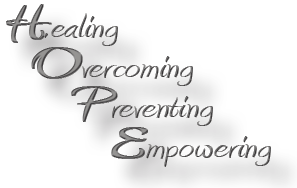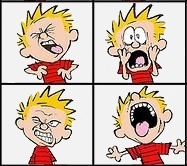


|
* Signs and symptoms * Causes *
Bipolar disorder goes by many names: manic depression, manic-depressive disorder, manic-depressive illness, bipolar mood disorder, and bipolar affective disorder are medical terms for the same condition.
Because of the extreme and risky behavior that goes with bipolar disorder, it is very important that the disorder be identified. With proper and early diagnosis, this mental condition can be treated. Bipolar disorder is a long-term illness that will require proper management for the duration of a person's life.
The symptoms of a manic episode often include elevated mood (feeling extremely happy), being extremely irritable and anxious, talking too fast and too much, and having an unusual increase in energy and a reduced need for sleep. It's also very common for someone to act impulsively during a manic episode, and engage in behaviors that are risky or that they later regret, like spending sprees. And in over half of all manic episodes, people are troubled by delusions or hallucinations. For example, they may think they have a relationship with someone famous, claim to be an expert in an area they really know nothing about, feel paranoid (unusually fearful), or hear voices that are not there. Symptoms of mania include:
Symptoms of depression include:
In adults, episodes of mania or depression usually last for weeks or months, although they can be shorter in length. In children and adolescents, though, these episodes can be much shorter, and a kid or teen can even go back and forth between mania and depression throughout the day. Episodes of mania or depression may happen irregularly and follow an unpredictable pattern or they may be linked, with a manic episode always following a period of depression, or vice versa. Sometimes episodes have a seasonal pattern. Mania in the spring, for example, may be followed by depression in the winter.
The symptoms of bipolar disorder are thought to be caused by an imbalance of key chemicals in the brain. The brain is made up of billions of nerve cells that move a constant stream of information from one to the other. To keep the information flowing, the cells release chemicals known as "neurotransmitters." Two key neurotransmitters that are needed for brain function are dopamine and serotonin, which play a crucial role in emotional health. Many scientists believe that when the levels of these neurotransmitters aren't quite right, it may result in bipolar disorder. For instance, too much dopamine in certain parts of the brain can cause symptoms such as delusions, while too little dopamine in other parts of the brain can cause symptoms such as a lack of emotion and energy.
Genes also play a role. If a close relative has bipolar disorder, a person's risk of developing the condition is higher. This doesn't mean, though, that if you have a relative with bipolar disorder you will automatically develop it! Even in studies involving identical twins raised in the same home, one twin sometimes had bipolar disorder whereas the other did not. Researchers are now working on identifying the gene or genes involved in bipolar disorder.
Environmental factors may play a role in bipolar disorder. For some teens, stresses such as a death in the family, their parents' divorce, or other traumatic events could trigger a first episode of mania or depression. Sometimes, going through the changes of puberty can set off an episode as well as emotional stress, drug use or an illness. In girls, symptoms can be tied to their monthly menstrual cycle.
Not everyone with severe mood swings or a change in personality has bipolar disorder. Mood swings can be caused by other medical conditions that need to be diagnosed and treated properly. Medical diseases and medications that may have symptoms similar to bipolar disorder include the following:
Most people with bipolar disorder can be helped. Sadly, many people with the condition are never diagnosed or are not diagnosed properly. Without proper diagnosis and treatment, the disorder can become worse. Some teens with undiagnosed bipolar disorder can end up in a psychiatric hospital or residential treatment center, in the juvenile justice system, abusing drugs, or committing suicide.
Because children and teens with bipolar disorder do not usually show the same patterns of behavior as adults who have the condition, a mental health professional will observe a teen's behavior carefully before making a diagnosis. This includes getting a complete history of a person's past and present experiences. Family members and friends can also provide helpful insights into the person's behavior. The doctor may also want a teen to have a medical exam to rule out other conditions.
Diagnosing bipolar disorder can be difficult. As yet, there aren't any laboratory tests like a brain scan or blood test that will diagnose it. In teens, bipolar disorder can sometimes be mistaken for illnesses like schizophrenia and posttraumatic stress disorder, attention deficit hyperactivity disorder (ADHD), and other depressive disorders. That's why a complete, detailed history is so important. |
||||
|
|
